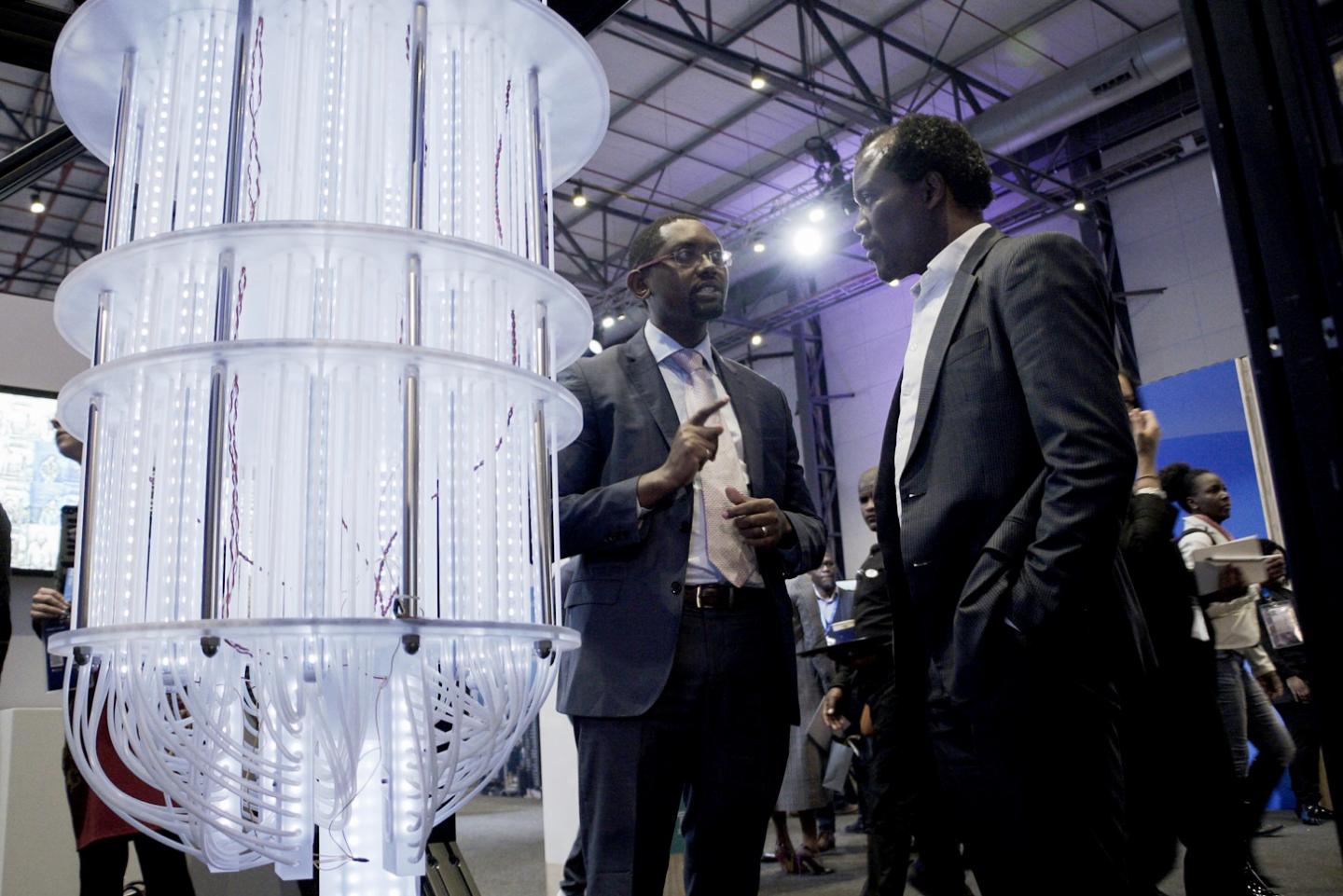IBM expands its quantum computing program with Wits as its first partner in Africa on the IBM Q Network

Credit: Wits University
IBM (NYSE: IBM) today announced the expansion of its quantum computing efforts to Africa in a new collaboration with the University of the Witwatersrand (Wits University) in South Africa. Wits University is the first African partner on the IBM Q Network and will be the gateway for academics across South Africa and to the 15 universities who are part of the African Research Universities Alliance (ARUA).
“This is the latest outcome of the joint partnership between IBM Research and Wits, which started in 2016 when IBM opened its second lab in Africa at the Wits University’s Tshimologong Digital Innovation Precinct in Johannesburg. To expand the IBM Q Network to include Wits will drive innovation in frontier-technologies and benefit African-based researchers, academics and students who now have access to decades of quantum computing capabilities at the click of a button,” said Professor Zeblon Vilakazi, Wits Deputy Vice-Chancellor: Research and Postgraduate Affairs.
[Also read: Becoming Quantum Ready in Africa]
Quantum computing promises to be able to solve certain problems – such as chemical simulations and types of optimization – that will be beyond the practical reach of classical machines. IBM first made quantum computers available to the public in May 2016 through its IBM Q Experience quantum cloud service and has doubled the power of its quantum computers annually since 2017.
IBM also established the IBM Q Network™, a community of Fortune 500 companies, startups, academic institutions and research labs working with IBM to advance quantum computing and explore practical applications for business and science.
Researchers at Wits will investigate the use of quantum computing and machine learning in the fields of cosmology and molecular biology with a specific focus on HIV drug discovery. The teams will also jointly study quantum teleportation, a field pioneered by IBM Fellow Charles Bennett.
“For Africa to remain competitive for the coming decades we must get the next generation of students quantum ready,” said Dr. Solomon Assefa, Vice President, Emerging Market Solutions and Director, IBM Research – Africa.
As part of the partnership between IBM and Wits, scholars from sixteen ARUA universities including: Addis Ababa University; University of Ghana; University of Nairobi; University of Lagos; University of Ibadan; Obafemi Awolowo University lle-Ife; University of Rwanda; University Cheikh Anta Diop; University of Cape Town; University of Kwa-Zulu Natal; University of Pretoria; Rhodes University; University of Stellenbosch; University of the Witwatersrand; University of Dar es Salaam and Makerere University, will have the opportunity to apply for access to IBM Q’s most-advanced quantum computing systems and software for teaching quantum information science and exploring early applications. To gain access to the IBM Q quantum cloud service, ARUA scholars will be required to submit quality research proposals to a scientific committee of Wits and IBM experts for approval.
“Having access to IBM Q is pivotal for Wits University’s cross-disciplinary research program and allows our researchers in quantum computing, artificial intelligence, and in the broad natural sciences, including in laser technology, quantum optics and molecular design, to leverage the next level of discovery research. It’s envisioned that the first results from this collaboration will be forthcoming in the next two years,” said Vilakazi.
IBM’s recently unveiled IBM Q System One, is the world’s first integrated universal approximate quantum computing system designed for scientific and commercial use.
IBM’s most advanced universal quantum computing systems available through the IBM Q Experience platform. More than 10 million experiments have run on the IBM Q Experience and users have published over 160 third-party research papers. Also, developers can work with Qiskit, a full-stack, open-source quantum software development kit, to create and run quantum computing programs.
To further increase skills development, IBM Q is hosting an invite-only Qiskit Camp in South Africa this December for 200 quantum researchers and computer scientists where they will learn in an immersive environment and receive hands-on training.
###
For more information about the IBM Q Network, as well as a full list of all partners, members, and hubs, visit https:/
The agreement with Wits was signed in April 2019.
About IBM Q
IBM Q is an industry-first initiative to build commercial universal quantum systems for business and science applications. For more information about IBM’s quantum computing efforts, please visit http://www.
IBM Q Network™ and IBM Q™ are trademarks of International Business Machines Corporation
About Wits
The University of the Witwatersrand (Wits) as a leading university, ranking first or second in Africa in all major global rankings, is transforming society and impacting positively on humanity through its commitment to academic and research excellence, and social justice. Whilst training scholars to explore frontier discovery research and innovation in science, technologies such as artificial intelligence, deep learning and machine learning, Wits is always mindful of how it will impact humanity, the future of our work and how we live, and our morals, ethics and values.
About African Research Universities Alliance
The African Research Universities Alliance (ARUA), inaugurated in Dakar in March 2015, brings together 16 of the region’s leading universities from different countries and different historical backgrounds, in a network with a common vision: to expand and enhance significantly the quality of research done in Africa by African researchers. This new network, from inception, was intended to be different from any other regional university networks. The difference was to come largely from the approach to be employed, namely bringing together a number of peer African institutions that were willing to work together by pooling their own limited resources, with a view to generating a critical mass that could more effectively support their limited, but growing numbers of researchers. Underlying this was the conviction that they could thereby leverage this effectively for additional resources from outside.
Media Contact
Erna van Wyk
[email protected]
Original Source
http://www.




